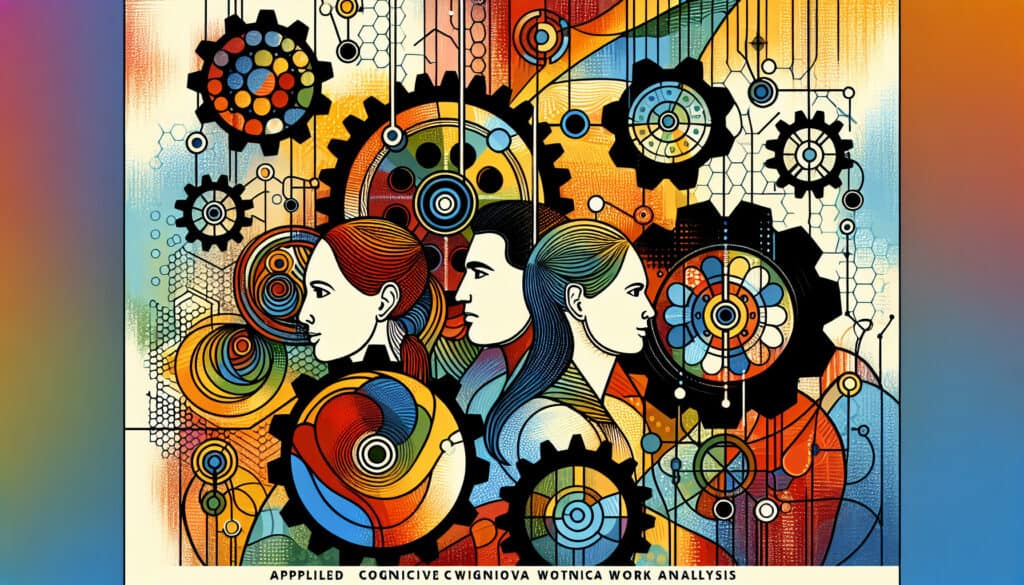A 框架 for analyzing complex socio-technical systems to understand how work is performed.
- 方法: 工程, 人体工程学
应用认知工作分析(ACWA)

应用认知工作分析(ACWA)
- Cognitive Computing, 持续改进, 设计思维, 人体工程学, 人为因素, Human-Centered Design, 流程改进, 风险管理, 系統建模語言(SysML)
目标
如何使用
- ACWA is a comprehensive work analysis method that combines elements of Cognitive Work Analysis (CWA) and other work analysis techniques. It is used to understand the constraints and affordances of a work system and to identify opportunities for improvement.
优点
- Provides a holistic view of the work system, helps to identify the root causes of problems, and can be used to design more effective and resilient systems.
缺点
- Is a complex and time-consuming method, requires a high level of expertise to apply, and may not be suitable for all types of systems.
类别
- 工程, 人体工程学, 解决问题
最适合:
- Analyzing complex work systems to improve performance, safety, and resilience.
Applied Cognitive Work Analysis (ACWA) finds significant application across various industries, particularly in sectors such as aviation, healthcare, and manufacturing, where the intricacies of human interaction with technology and environment necessitate detailed analysis. This methodology can be especially beneficial during the design phase of new systems or processes, where understanding user needs and operational contexts is paramount. Participants typically include multidisciplinary teams comprising system designers, human factors engineers, domain experts, and end-users, facilitating a comprehensive examination of work tasks and user goals. For example, in healthcare, ACWA is employed to redesign workflows that improve patient safety and clinician efficiency, while in aviation, it aids in optimizing cockpit interface design to enhance pilot decision-making. The method assists in identifying latent issues within work systems, such as miscommunications or inefficiencies, allowing teams to propose targeted interventions. It integrates cognitive models with traditional work analysis techniques, creating a systematic approach to identifying and modeling the knowledge, skills, and mental processes required to complete tasks successfully in real work environments. Through workshops and collaborative sessions, ACWA promotes the alignment of organizational objectives with user-centric design, ensuring that the systems developed not only meet performance standards but also enhance user satisfaction and adaptability to unexpected challenges.
该方法的关键步骤
- Define the work domain and its operational environment.
- Identify the work functions and corresponding tasks within the domain.
- Analyze the constraints imposed by the work environment and technologies.
- Map cognitive demands and the associated knowledge, skills, and strategies required.
- Evaluate the task interdependencies and their impacts on work performance.
- Identify gaps in current systems and areas for potential innovation.
- Design interventions that align with the identified constraints and opportunities.
- Iterate the design based on feedback from system stakeholders.
专业提示
- Integrate direct observation methods within the ACWA framework to capture tacit knowledge from practitioners in the work system, revealing hidden workflows and subtle interactions often overlooked.
- Utilize stakeholder workshops for collaborative exploration of work scenarios, which enhances the identification of constraints and affordances by incorporating diverse perspectives and experiences.
- Incorporate iterative prototyping of solutions based on ACWA findings, allowing for real-time feedback and adjustments that align with users' needs and operational realities.
历史背景
1986
(如果日期不详或不相关,例如 "流体力学",则对其显著出现的时间作了四舍五入的估计)。

相关文章
肌肉骨骼不适调查表
多变量测试(MVT)
多元回归分析
动作捕捉系统
MoSCoW 方法
情绪中值测试